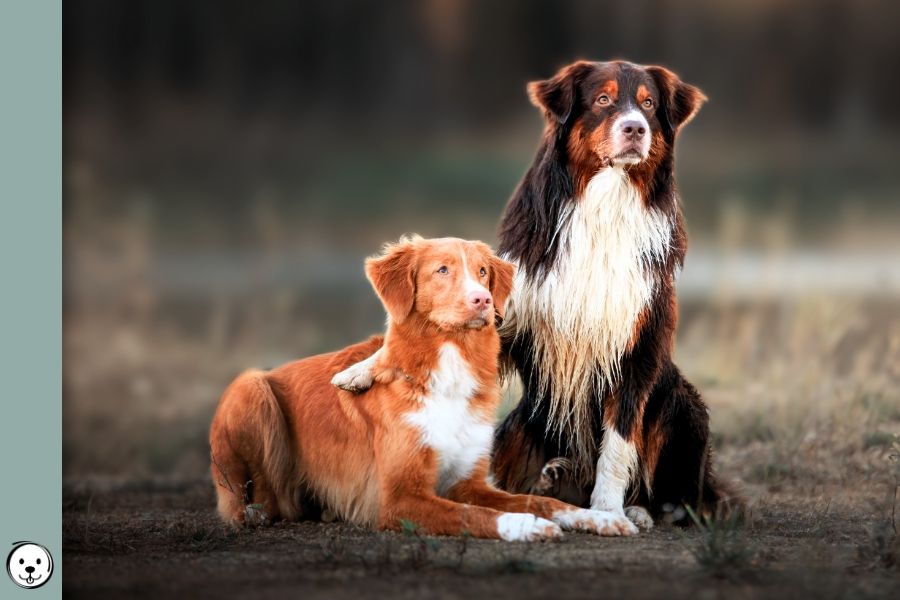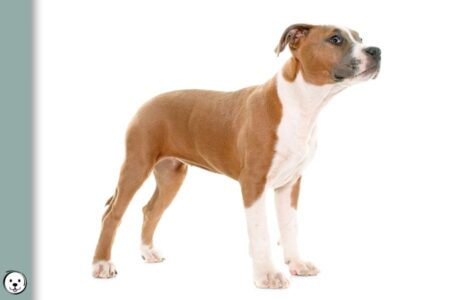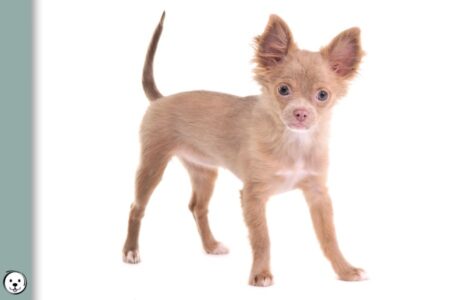What exactly is a red dog? How is he different from a brown dog?
In terms of color genetics, the difference is easy to explain. Brown always means chocolate-colored eumelanin. And red always means orange-red to red phaeomelanin. Sounds quite simple, doesn’t it?
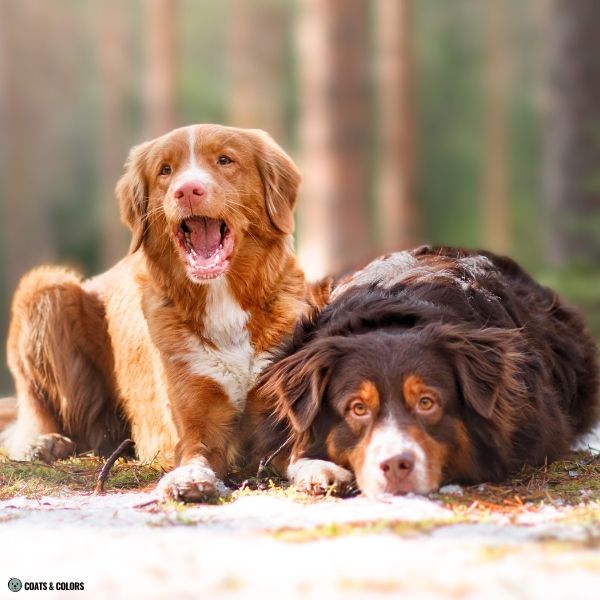
The confusion about red coat in dogs originates from breed terminology, which is often not based on color genetics. Many breed standards have their very own interpretation of what they mean by “red”.
Standards use purely descriptive color names to designate the patterns within their breed. And these terms are rarely based on the correct terminology.
In this article, we will learn how to tell apart red and brown. And then we will discuss how different dog breeds have defined these terms… which does not have to make sense.
Red vs. Brown Pigment
First, let’s go over what red and brown are when using proper genetic terms.
Dogs get their coat colors from two different kinds of pigment called phaeomelanin and eumelanin.
Both of these pigments come with a set of modifiers that can affect their final color.
And “red” and “brown” are just that, pigment colors.
Brown always refers to eumelanin. Red always refers to phaeomelanin.
Brown is modified black eumelanin. Red is an intense shade of phaeomelanin.
Both traits work separately from one another.
However, the nose pigment is always made from eumelanin and will be either black or brown.
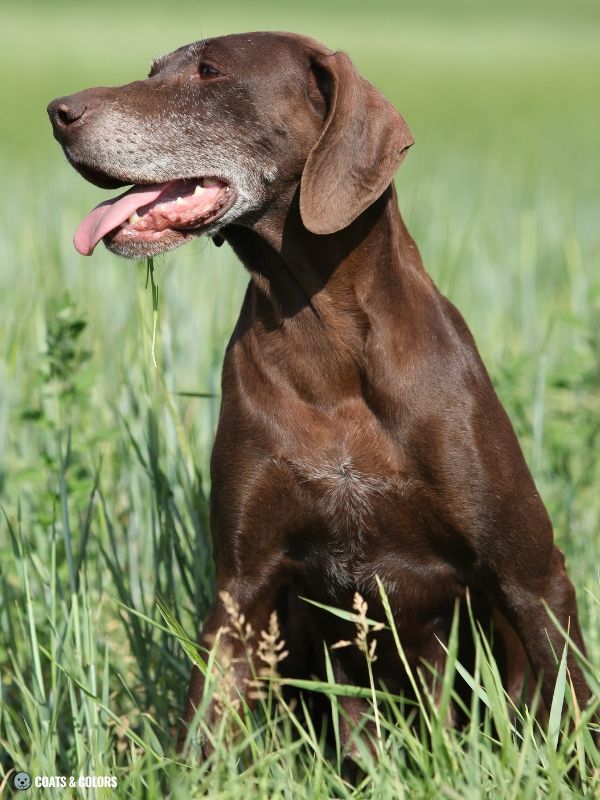
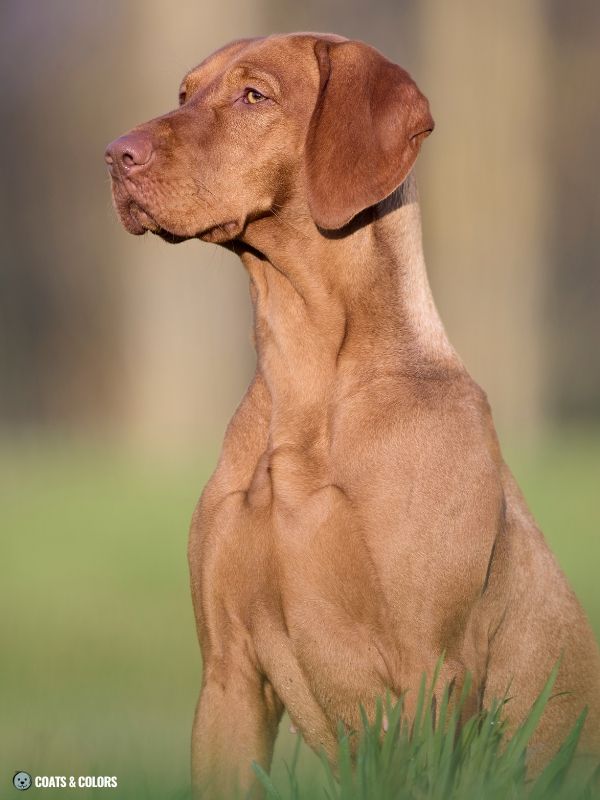
Brown Eumelanin
Eumelanin can be either black or brown, depending on a dog’s B locus.
Dogs with two recessive B locus alleles (b/b) will produce “brown” eumelanin.
This will turn all of the black pigment in their pattern to brown.
Brown eumelanin makes the difference between a black Labrador and a chocolate Labrador.
Dogs with brown eumelanin will also have a brown nose, brown lips and brown eye rims.
Brown dogs also tend to have lighter amber or honey-colored eyes.
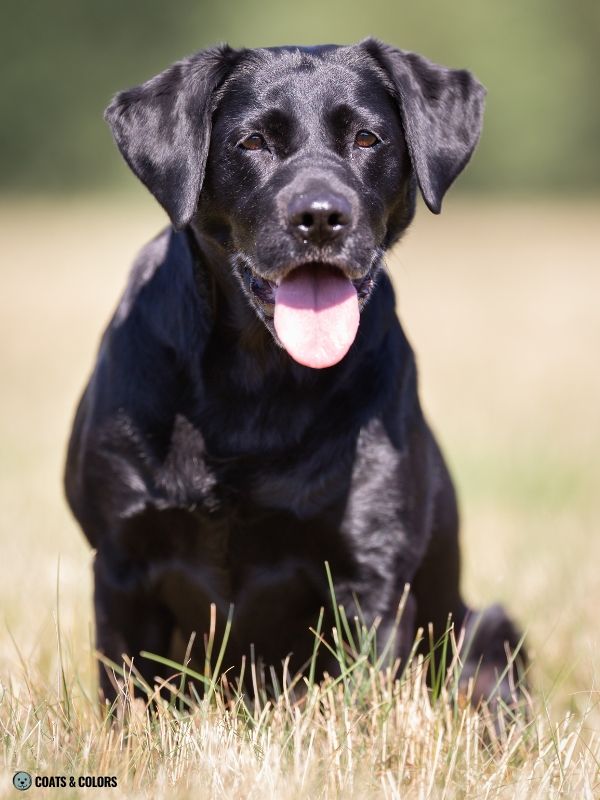
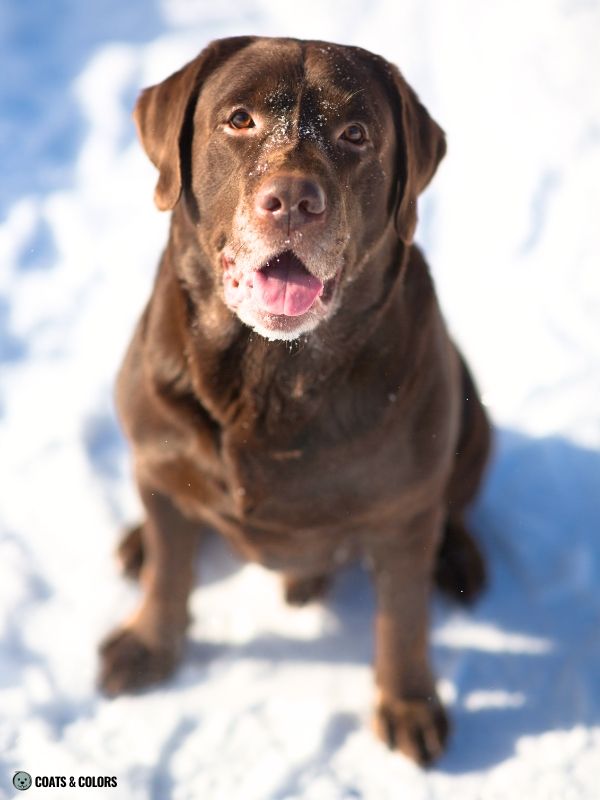
Red Phaeomelanin
Pheaomelanin comes in shades from off-white to yellow to red, depending on red intensity modifiers.
In genetic terms, high-intensity phaeomelanin is called “red“.
Intense phaeomelanin makes the difference between a cream or yellow dog and a red dog.

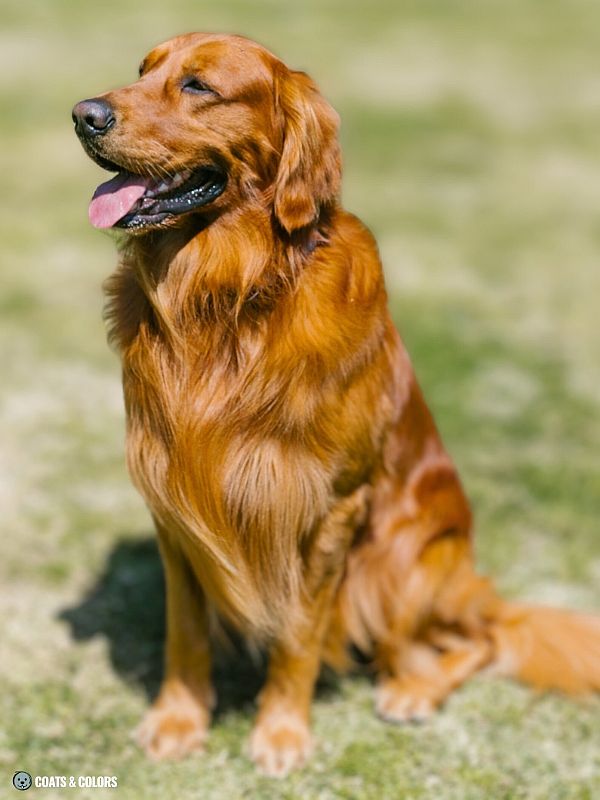
But phaeomelanin does not affect a dog’s nose color or skin pigment.
Meaning, that any yellow or red dog can come with a black or a brown nose (some breeds call the latter a “red nose”, of course).
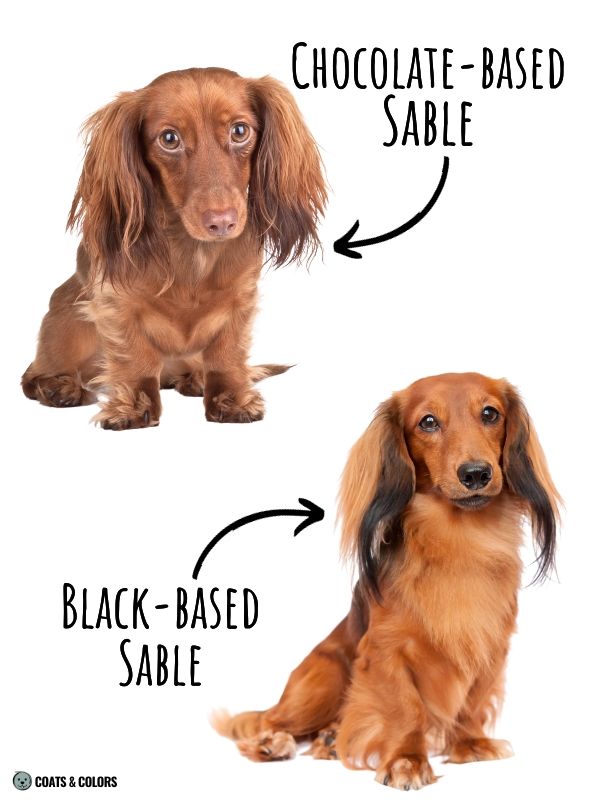
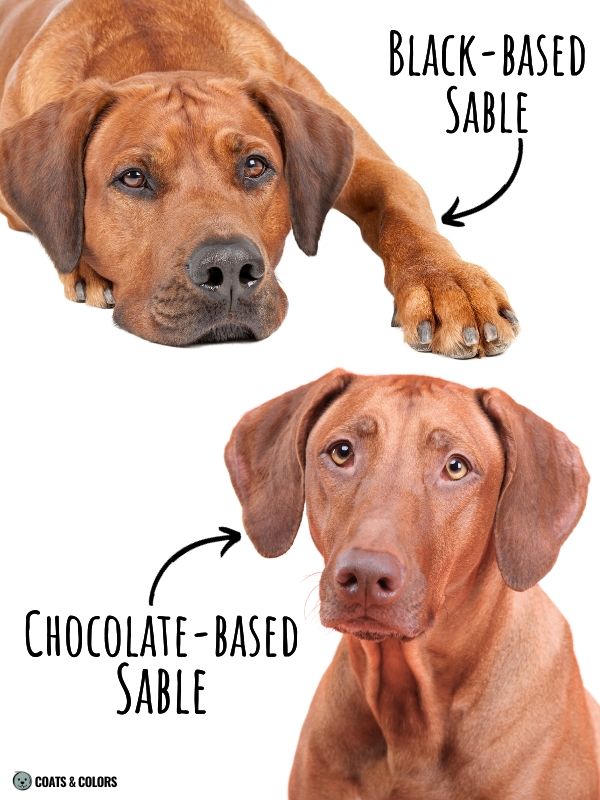
But only one of the Dachshunds and one of the Rhodesian Ridgebacks has a brown nose (and all their sable shading turned to brown), while the other one has a black nose.
See The Difference?
In most cases, quite easy to tell the difference between red pigment vs. brown pigment.
Brown is a rich liver or chocolate brown.
Red falls somewhere between dark orange and chestnut red.
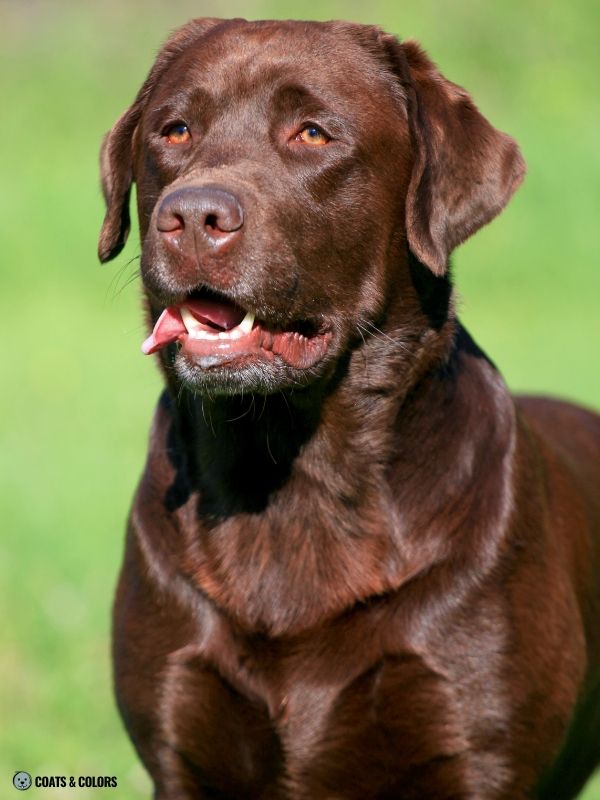

Very intense red phaeomelanin and some lighter shades of orangey sunbleached brown can look somewhat similar at times. Beginners might find some image examples harder to grasp than others.
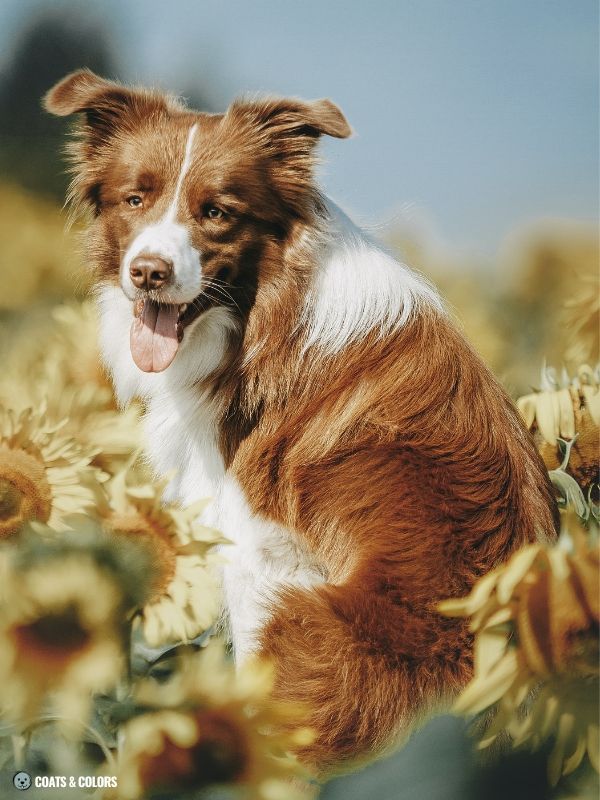
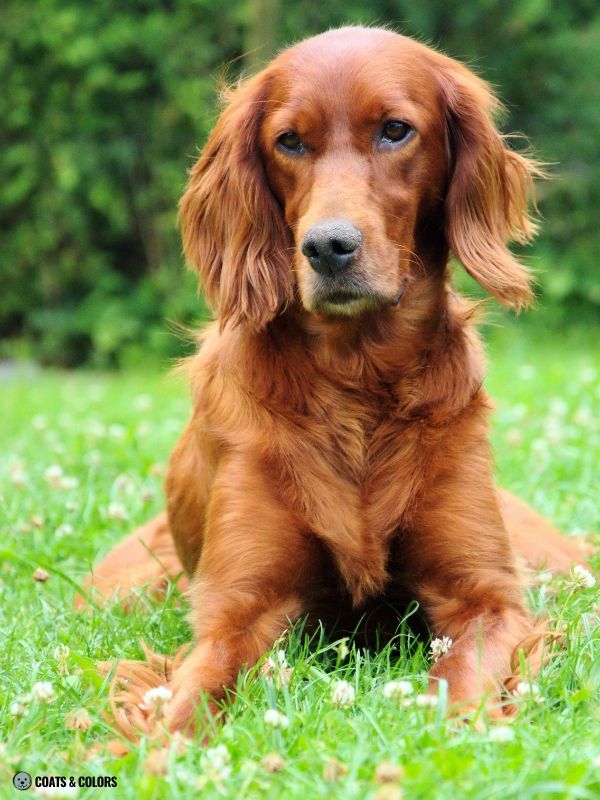
There are solid brown or solid red dogs, with or without white markings.
Solid brown dogs are either dominant black or recessive black, just with their black eumelanin modified to brown. These dogs can only produce eumelanin in their coat.
In most breeds, “red” refers to a mostly pheomelaninc coat that comes with a high-intensity shade of pheomelanin pigment somewhere between coppery orange and chestnut red.
There are two pathways to create a more or less solid red coat:
Dogs that are solid red are either very clear sable or recessive red. These dogs express only phaeomelanin in their coat which has been modified to have a deep rich red shade.
But all but one of the A locus patterns are made from both types of pigment. These patterns (e.g. shaded sable or tan point) can come with red phaeomelanin and brown eumelanin at the same time.
And in some patterns like sable or agouti, brown and red can blend into each other quite a bit. That’s due to the contrast of brown and red being way lower than black against red.

Red In Breed Terminology
Dogs with very different genotypes can be correctly called “red” depending on the breed terminology used. Just keep in mind that this may not correspond to the more accurate color genetics terms.
Unfortunately, “red” is a term whose meaning varies from breed to breed. People with different breed backgrounds mean different things when they talk about red dogs. Since there is no clear definition, it is often necessary to clarify these terms before starting any discussion about dog colors.
And this is not about to change any time soon. You just have to accept that there is no way around learning how different breeds call their colors and patterns.
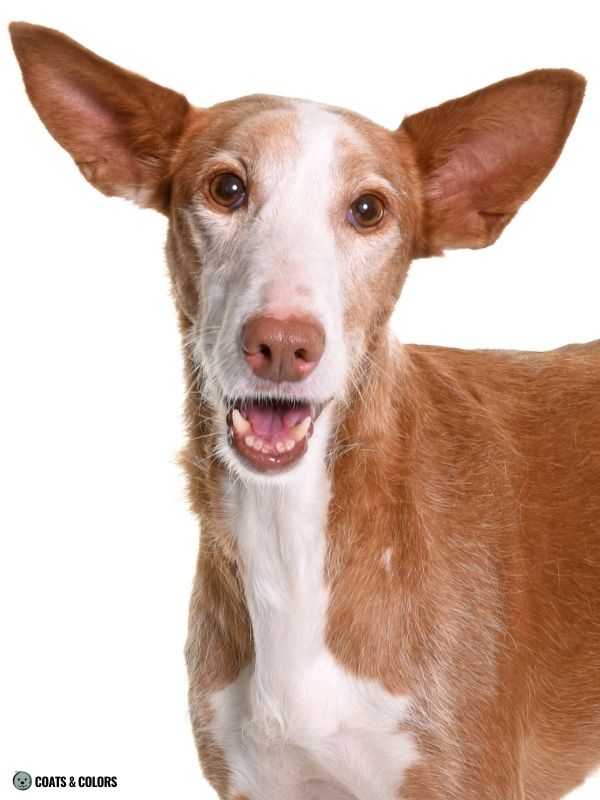
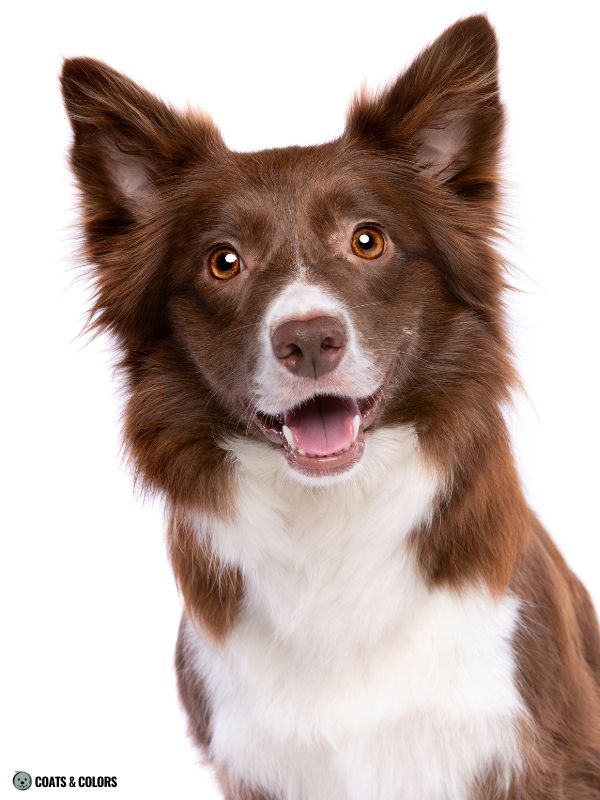
False “Red”: Chocolate Brown
In color genetics, brown eumelanin (b/b) is never ever ever called “red”.
However, many dog breeds didn’t get the memo and still label their chocolate-colored dogs or the brown parts in any of their patterns as “red”.
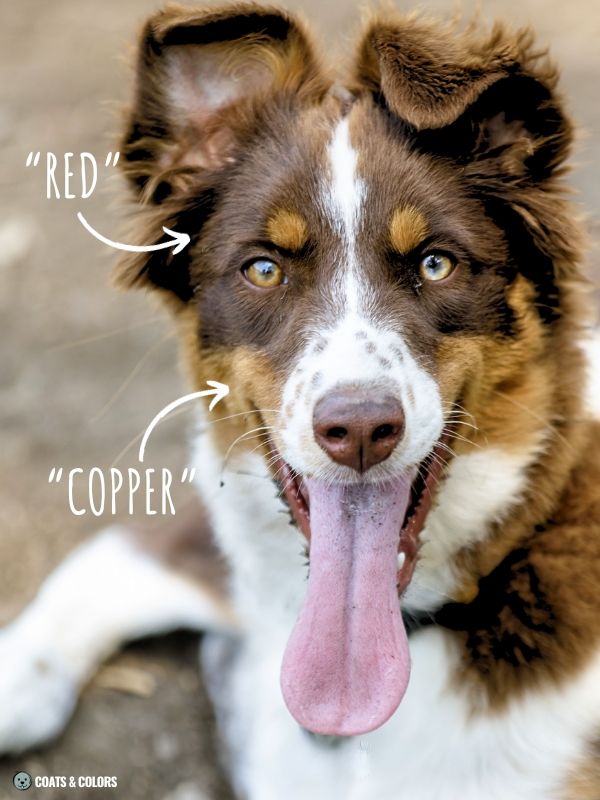
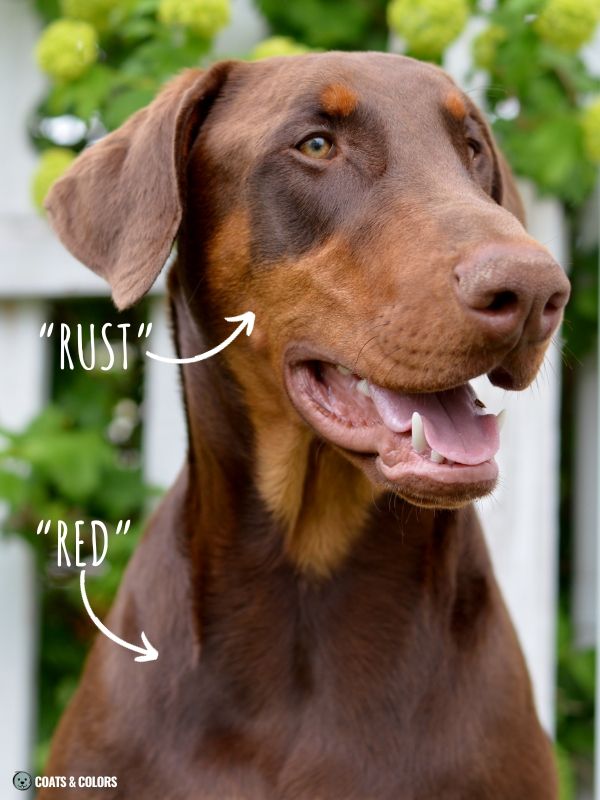
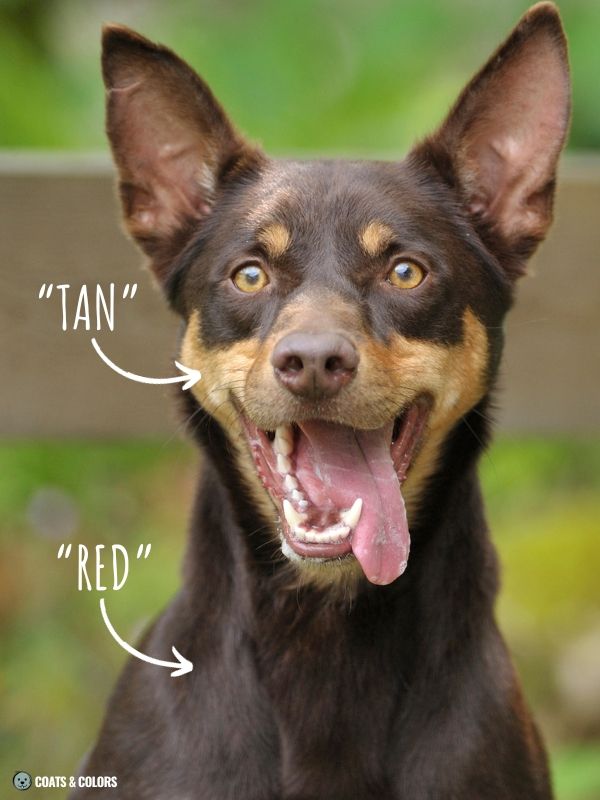
Border Collies, Australian Shepherds, Koolies, and Kelpies call their brown-based patterns “Red“.
There are lots of variations such as “Red Tricolor” (brown & tan points + white) or “Red Merle” (brown-based merle). In Catahoulas, you’ll find terms such as “Red Leopard” (brown-based merle).

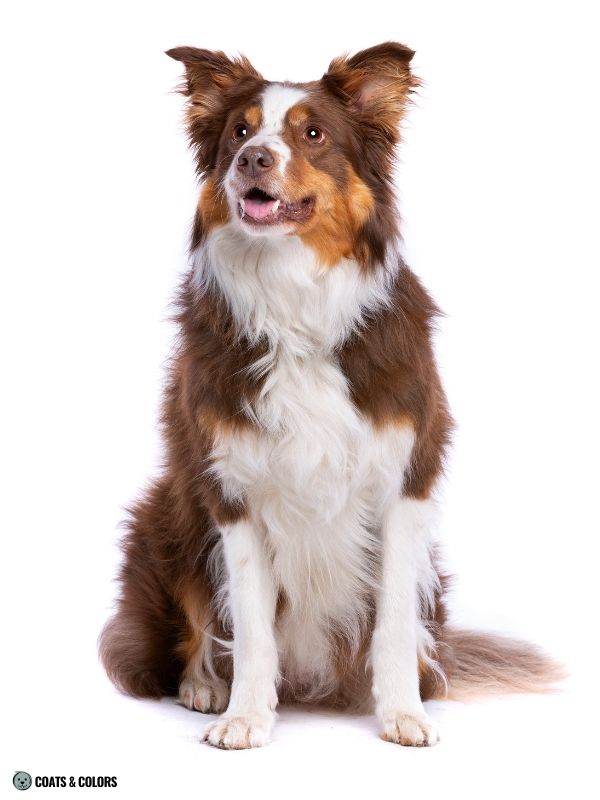
In Huskies and Malamutes, Alaskan Klee Kai or Pomskies, “Red & White” usually refers to a brown & white dog. Brown-based patterns with domino can be called “Light Red” due to their overall paler look.
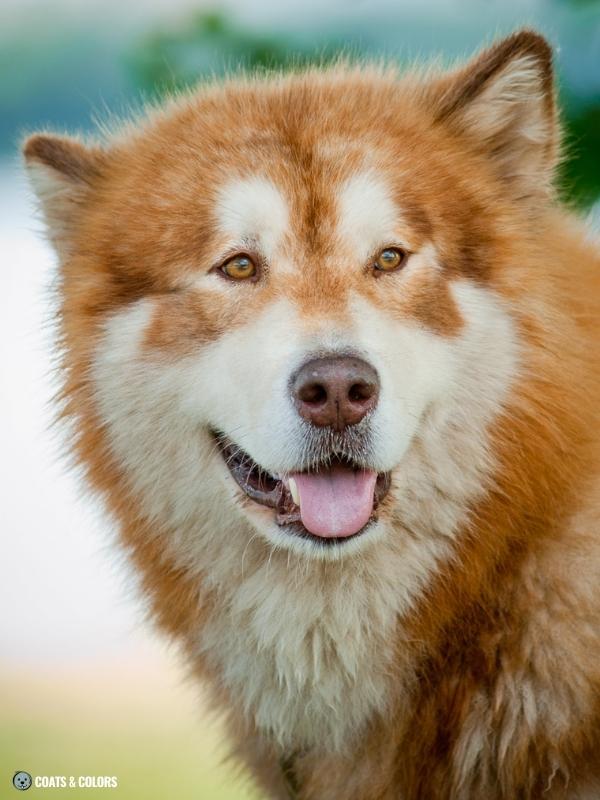
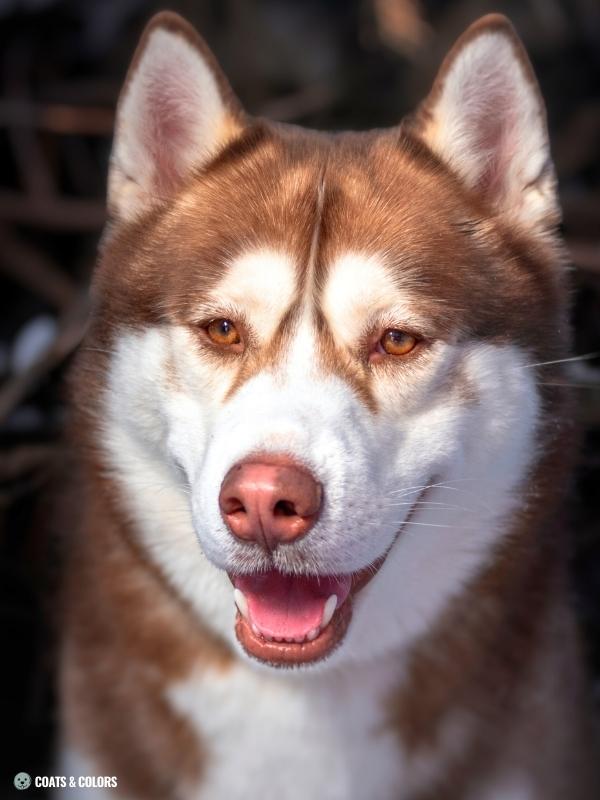
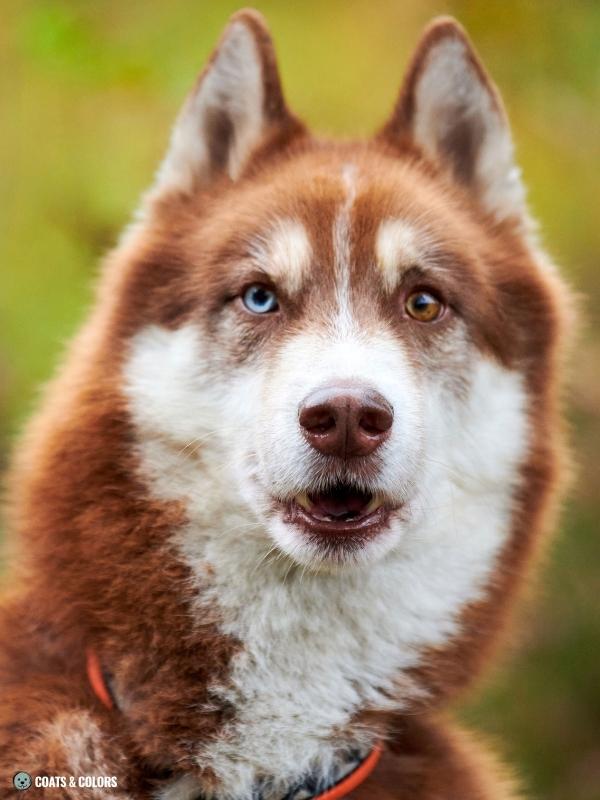
True “Red”: Sable & Recessive Red
Some red dogs are recessive red (also sometimes “recessive yellow“), others are sable.
And some breeds come with both of these patterns (e.g. Border Collies, Chihuahuas, Chow Chows, Brittany Spaniels, Tollers, Pomeranians, etc.).
Recessive red (e/e) completely prevents the expression of eumelanin pigment in the coat and overrules any pattern that would need eumelanin to be visible.
These dogs will be truly solid red and they even have white whiskers.
Their nose can be black or brown but is very prone to pigment fading.
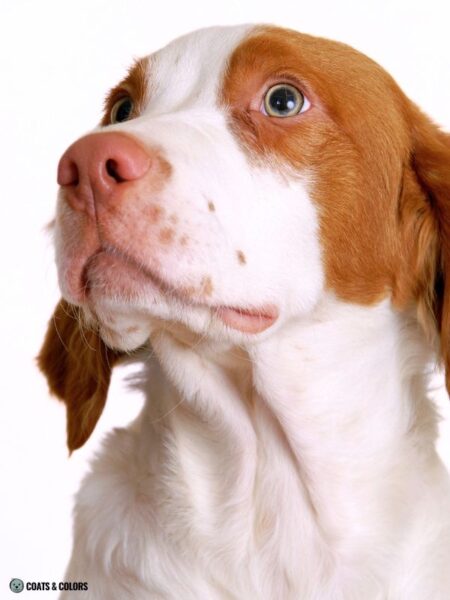
Very many dog breeds with this pattern call their phaeomelanin-patterned dogs “red”. And these dogs don’t necessarily come with overly intense shades of phaeomelanin.
There are many examples for recessive red dogs:
Think of “Australian Red” in Border Collies or “Fox-Red” in Labradors.
The Irish Red Setter and Irish Red & White Setter even included the term in their breed names.
Tollers, Vizslas, Welsh Springer Spaniels or Ibizan Hounds come with red pigment.
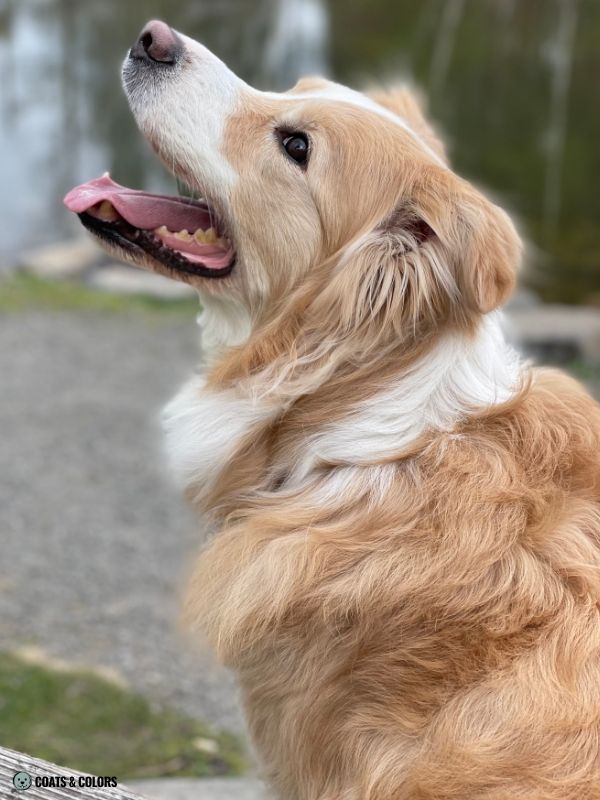
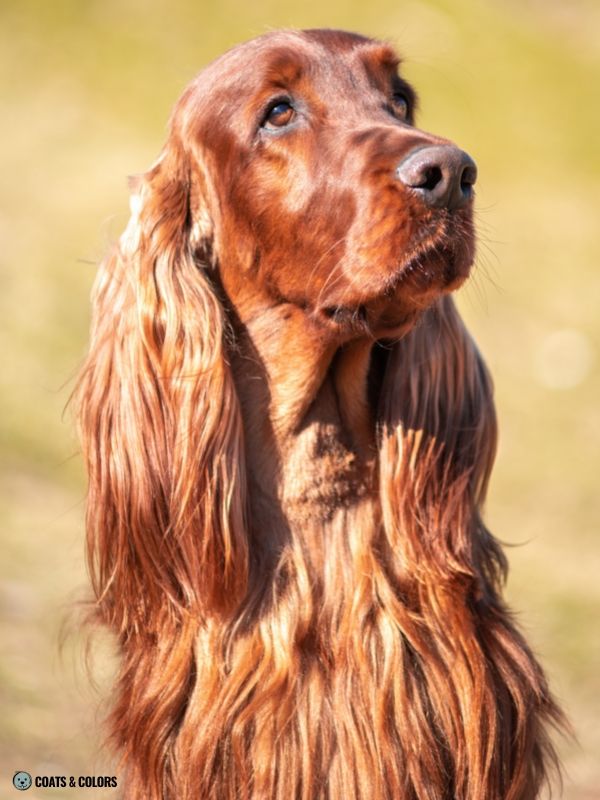

In other breeds, red is just one of the possible color varieties.
Think of red Cocker Spaniels, Poodles, Beagles, or Pomeranians.
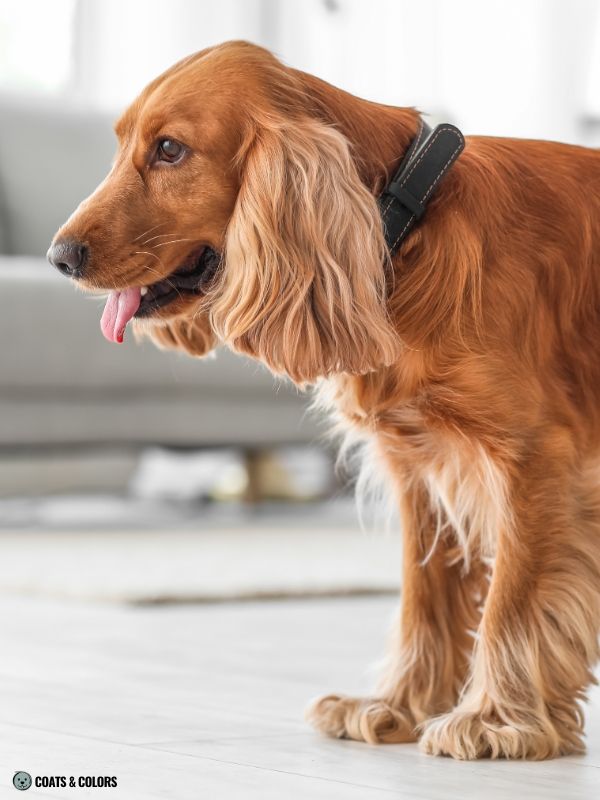
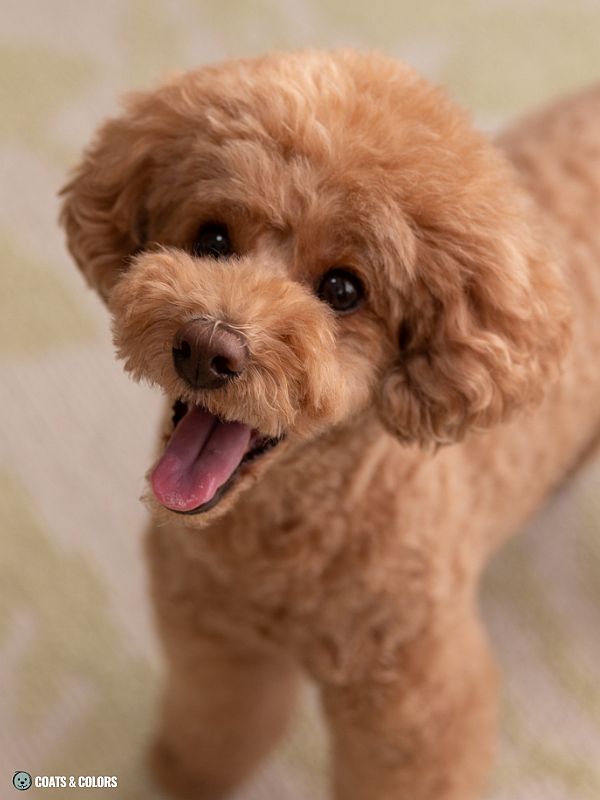
Other red dogs are clear sable (also sometimes “dominant yellow“).
Clear sable (ky/ky Ay/-) dogs might have some darker puppy shading which clears and will be gone once they grow into their adult coats. Some dogs keep their shading if they are shaded sable (Ays/-).
These dogs are mostly solid red but they have dark whiskers. And sable dogs can express eumelanin in their pattern so they might have a melanistic mask or a brindle pattern on top of their red base coat.
And did you know that “red dapple” means sable merle in Dachshunds?

Overall, red is one of the most common color terms in sable dogs.
Red Dachshunds are sable, same as Redbone Coonhounds, red Eurasiers, red AmStaffs and Mastiffs or red Whippets, Shibas, or Papillons.
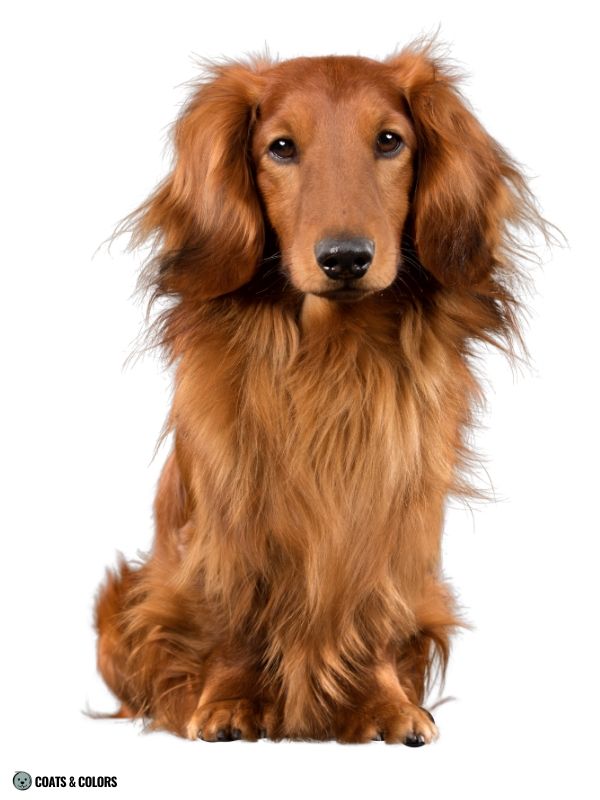

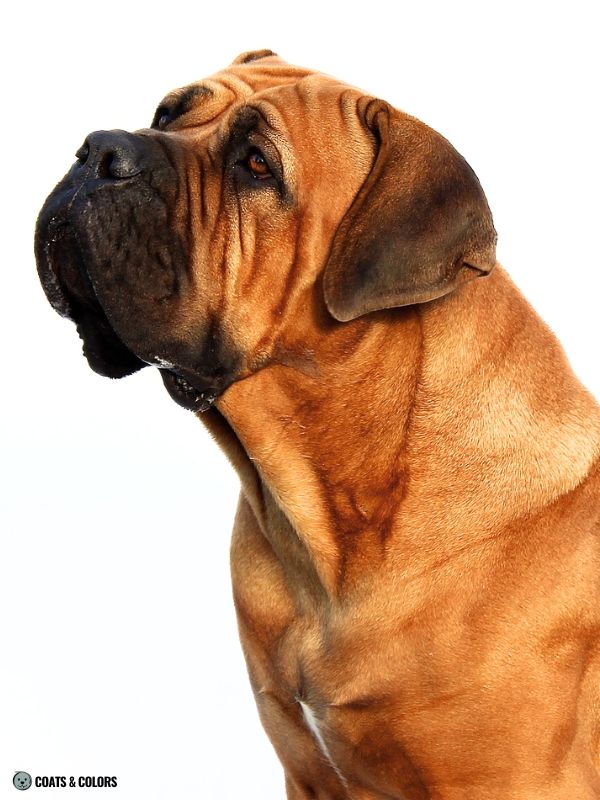
Red Dogs
Let’s summarize:
In genetic terms, brown is eumelanin, red is phaeomelanin.
In breed terms, people may call any color whatever makes sense to them.
As you can imagine by now, this can cause a lot of confusion when people from different backgrounds start talking about “red dogs”. Or when someone asks in online groups, “What color is my dog?” and gets flooded with a variety of mixed opinions (because breed terms are just that, opinions!)
Some breeds even invented their own names for shades of red such as “Red Golden” in Vizslas or Tibetan Mastiffs, “Red Wheaten” in Irish Terriers or “Stag Red” in Miniature Pinschers.
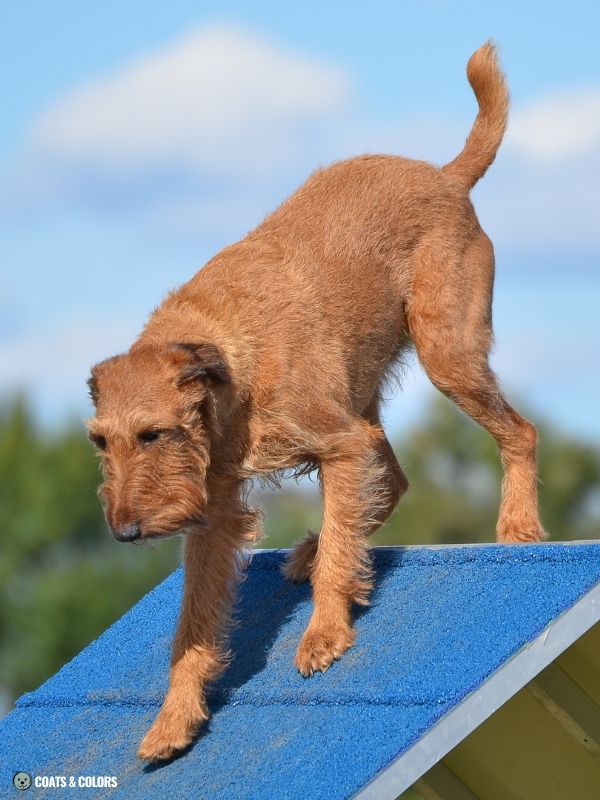
As a rule of thumb…
Dog breeds that never come with brown pigment, use “red” for any dog with more or less vivid phaeomelanin. This is the case for most molosser breeds, sighthounds, or Japanese spitz-type dogs.
Dogs that don’t typically come in solid red patterns use “red” for any pattern with brown pigment. That is the case with herding breeds such as Australian Shepherds or Kelpies and many sled dog breeds.
Breeds that come with both brown and red pigment had to assign specific names for each color to tell them apart. For example, the Bracco Italiano calls their browns “chestnut” and their reds “orange“.
And then there are breeds like the Border Collie who chose to name both colors “red“…
And if you are not confused enough by now…
There are breeds that use “brown” for red-based patterns, too. The AKC standards list “Reddish Brown” for black-based sable Boerboel and Leonberger or “Brown” and “Brown Brindle” for muted darkish sable patterns in American Akitas …. all breeds that do not actually have brown eumelanin!
Learn More

Hi! I’m Steffi. I am a biologist and a big time dog nerd. You are curious about coat color genetics? You’ve come to the right place! Read more.

